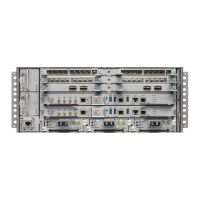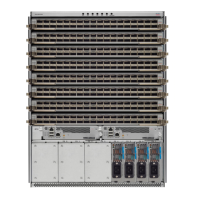Configure a Policy Map
This procedure helps you define a policy map and associate it with traffic class you configured previously in
Configure a Class Map, on page 113 .
SUMMARY STEPS
1. configure
2. policy-map type pbr policy-map
3. class class-name
4. class type traffic class-name
5. action
6. exit
7. end-policy-map
DETAILED STEPS
PurposeCommand or Action
configure
Step 1
Creates or modifies a policy map that can be attached to
one or more interfaces to specify a service policy and enters
the policy map configuration mode.
policy-map type pbr policy-map
Example:
RP/0/RP0/CPU0:router(config)# policy-map type pbr
Step 2
policyp1
Specifies the name of the class whose policy you want to
create or change.
class class-name
Example:
Step 3
RP/0/RP0/CPU0:router(config-pmap)# class class1
Associates a previously configured traffic class with the
policy map, and enters control policy-map traffic class
configuration mode.
class type traffic class-name
Example:
RP/0/RP0/CPU0:router(config-pmap)# class type
Step 4
traffic classc1
Define extended community actions as per your
requirement. The options include:
action
Example:
Step 5
• Traffic rate: police rate rate
RP/0/RP0/CPU0:router(config-pmap-c)# set dscp 5
• Redirect VRF: redirect { ipv4 }extcommunity
rt route_target_string
• Traffic Marking: set { dscp rate |
destination-address {ipv4} 8-bit value}
Routing Configuration Guide for Cisco NCS 6000 Series Routers, IOS XR Release 6.4.x
115
Implementing BGP Flowspec
Configure a Policy Map

